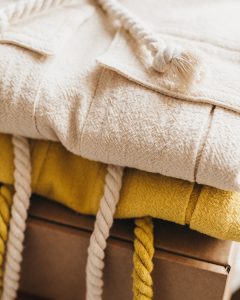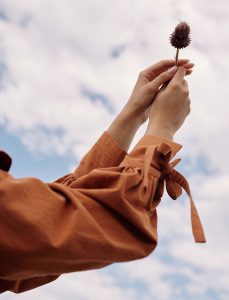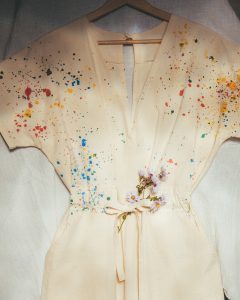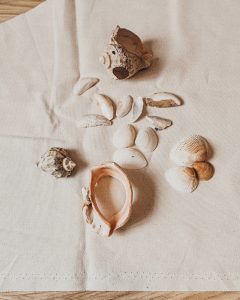LÝF’s care guide. Care for your clothes to to ensure your pieces last.
Taking care of your clothes is not only good for you because they last longer, but is thought to significantly reduce the carbon and water footprint of each piece. Everything in our collection is crafted with longevity in mind and here we share tips on how to make your pieces last for as long as they were designed to.
I. Green cleaning
Always respect the care instructions on the garment’s label. Don’t wash them obsessively. To prolong the life of your special pieces, reduce impact and preserve the texture of cotton and linen, we highly recommend using gentle, natural, biodegradable soaps. The temperature on the care label is maximum, rather than recommended – 30 degrees should be the standard washing temperature, saving energy and prolonging the life of your clothes.
Tackle stains immediately, then aim to wash your clothes less often – brush, lint roll, steam or spot clean to refresh between washes. Freezing is a handy way to eliminate odors and also kills moth larvae.
Due to the handmade nature of same of our products please be aware that color transfer may occur. Avoid direct sunlight when drying. Once dry, you can twist and store your dress in the provided dust bag, as it may have been delivered, to accentuate the crinkled fabric effect. Steaming your dress will remove this effect, and we do not recommend it. Do not dry clean unless told on the care label.
II. Store safely
Store clothes carefully between wearing – tailoring should be hung on a supportive hanger; knitwear should be laid flat, folding along seams if necessary. Avoid hanging items that have been cut on the bias, as they are likely to misshape.
Between seasons, ensure your garments, particularly natural fibers, are stored away from light and moisture in airtight bags to protect against moths.
III. Repair – Redesign or upcycle your garments
Small snags in knitwear or tears in fabric should be mended as soon as possible, and certainly before you re-wear or wash, as they are likely to grow.
Most damage is salvageable with a little imagination – repairs can always turn into reworks with a good seamstress.






